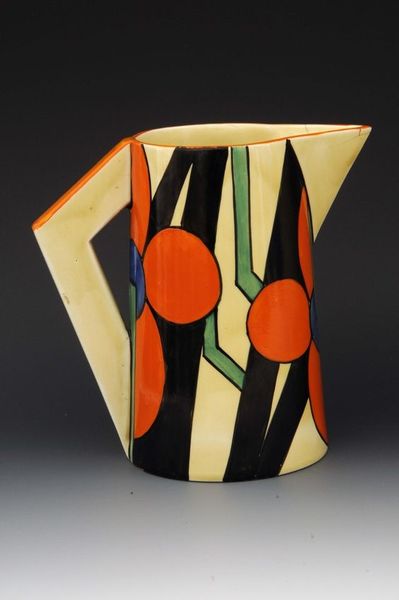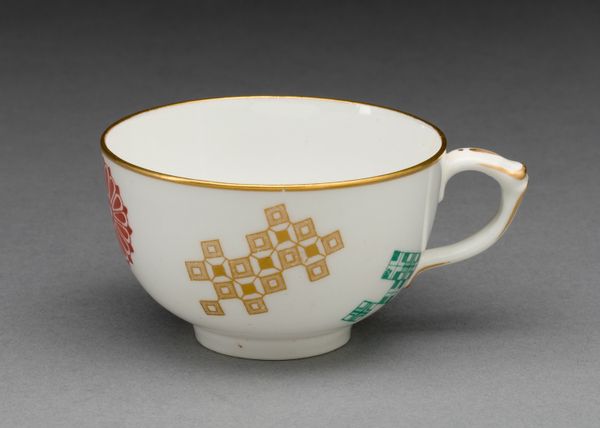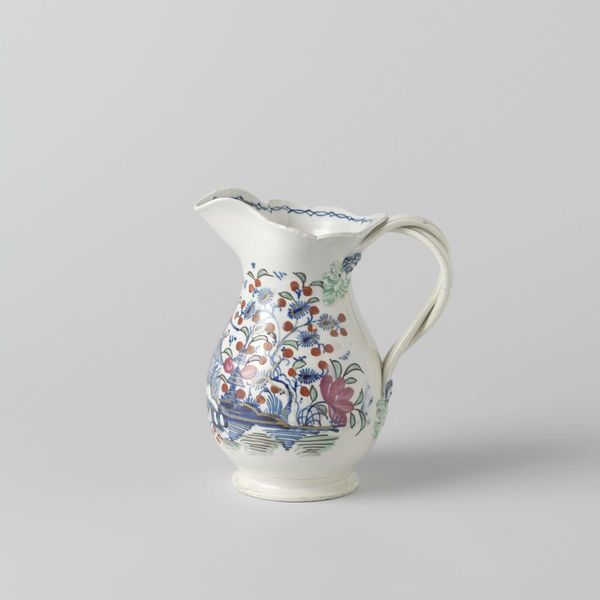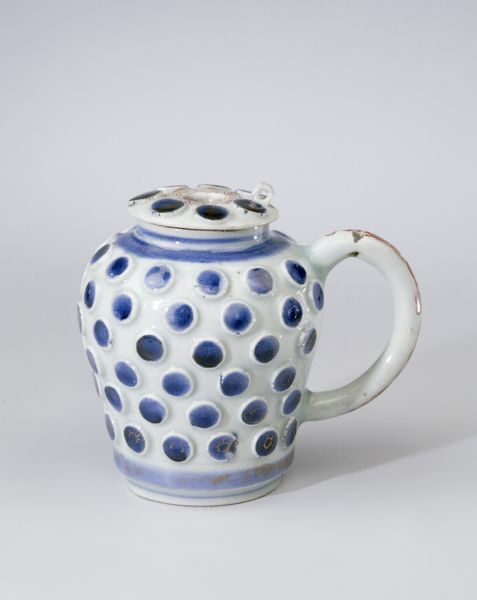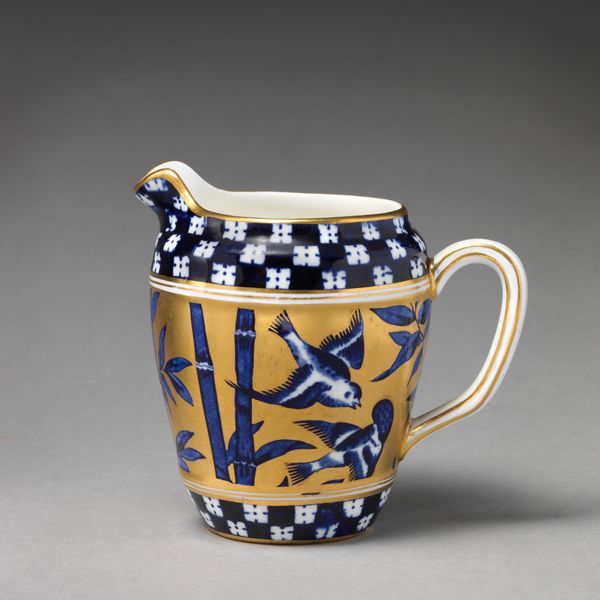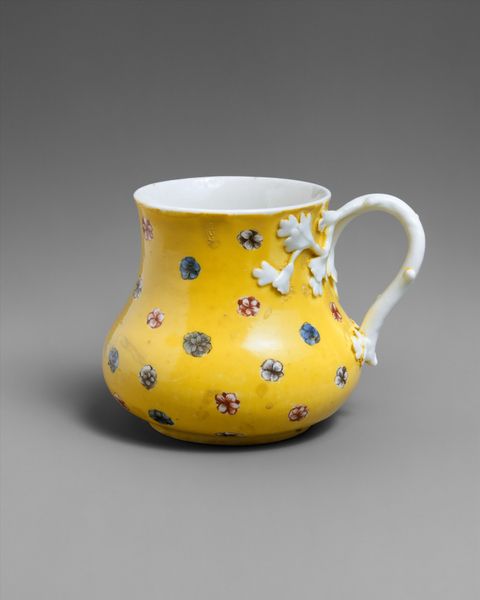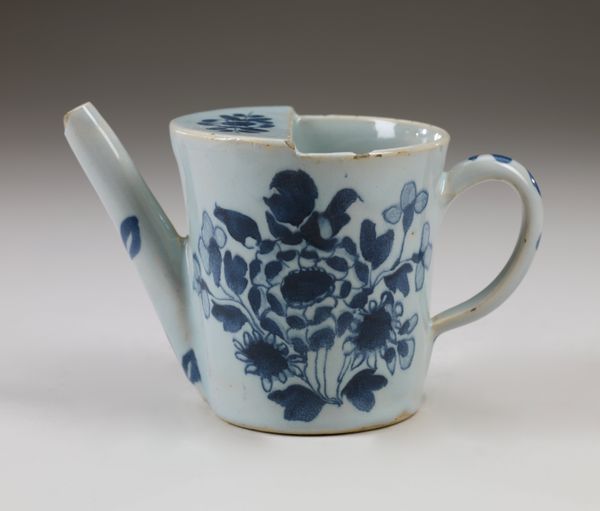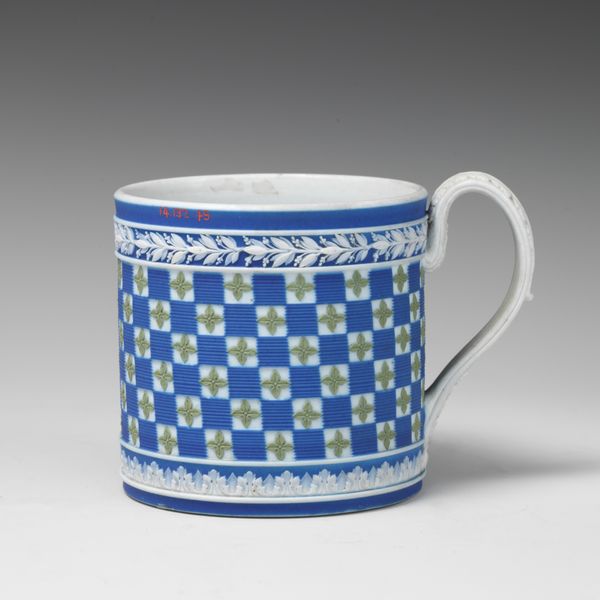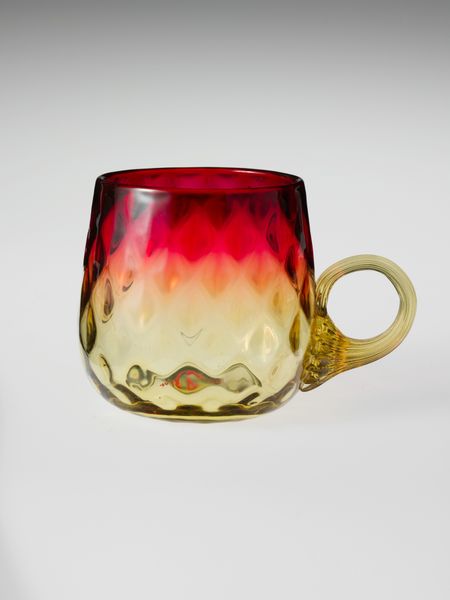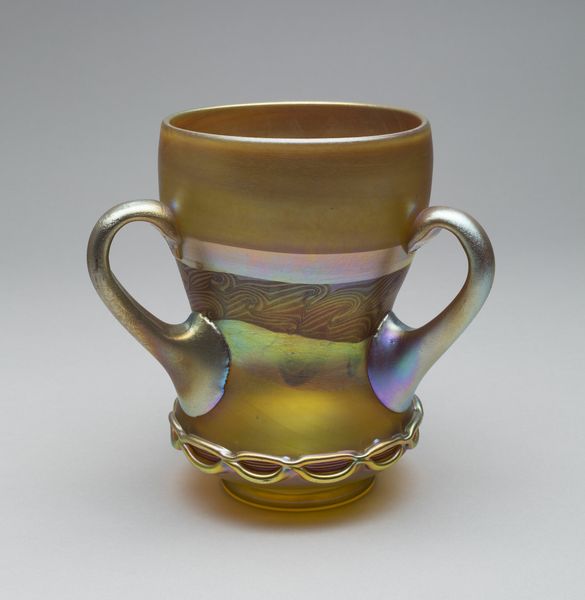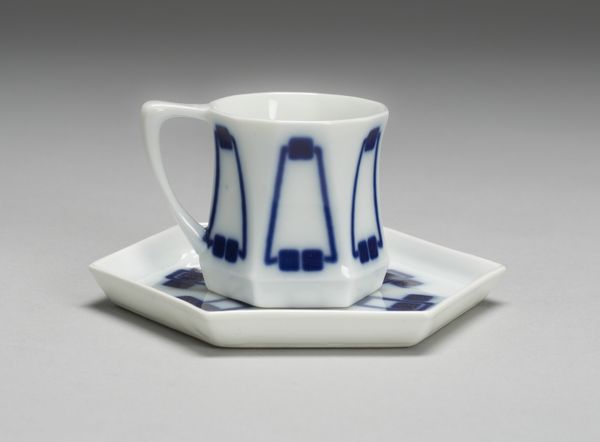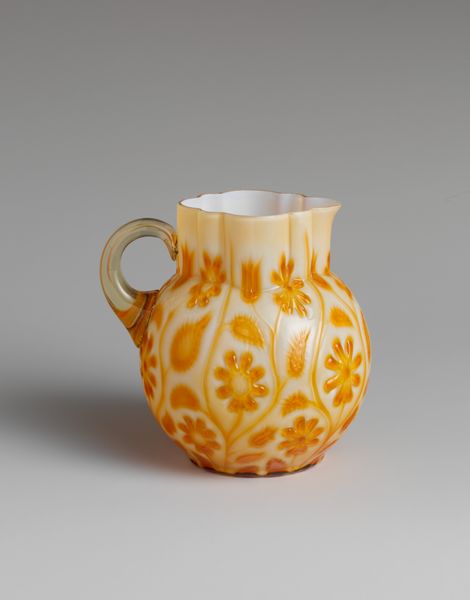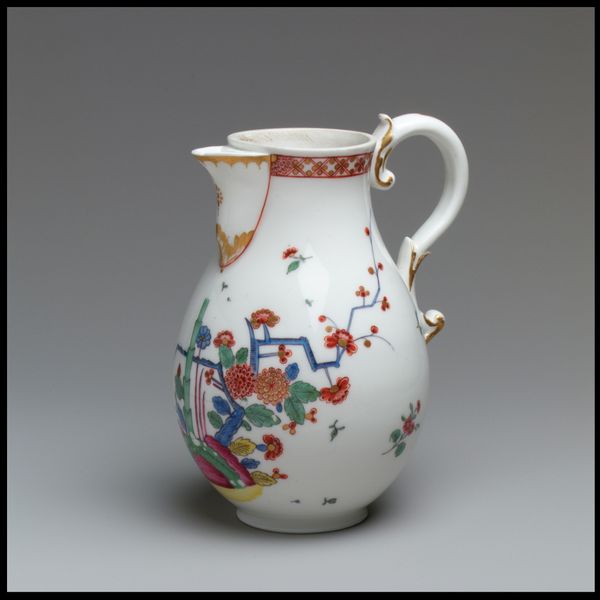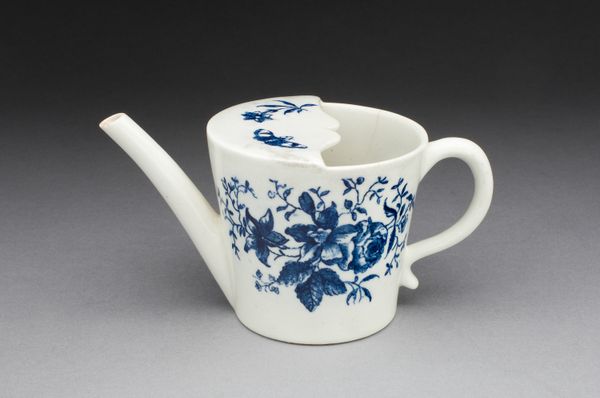
ceramic
#
ceramic
#
line
#
decorative-art
Copyright: No Known Copyright
Editor: Here we have a "Coffee Pot" from around 1960, made from ceramic. It seems deceptively simple at first, but that vibrant, almost dizzying pattern grabs your attention. How can decorative arts like this offer insights into society and culture at that time? Curator: That's a perceptive question. This coffee pot, while seemingly a mundane object, speaks volumes about the era. Consider the post-war boom of the 1960s. There was a societal shift towards consumerism and optimism. Could this "Pattern and Decoration" artwork have been a celebration of material culture and domestic life, elevating it to an art form, while other contemporaneous artists criticized it? Editor: It definitely has that Pop Art vibe of celebrating the everyday. So, are you suggesting that by embracing such bold and vibrant design, it made art accessible and broke away from established elite art standards? Curator: Precisely. Look at how Abstract Expressionism’s influence seeps in despite the pattern and design movement's resistance to it, too. The geometric forms could be a democratizing gesture by bridging so-called 'high art' and the everyday object. Who was this ceramic made for, and who got to use it? Those are important questions to consider the socio-economic implications. Editor: That's interesting. So, instead of viewing it as just a coffee pot, we can see it as a symbol of shifting cultural values and a change in art's purpose within society? Curator: Exactly! Think about the design. It almost mimics psychedelic patterns. That also makes me consider if it perhaps represents that shifting public role of art as a mode of liberation from norms, in general. The public's coffee or tea breaks aren't neutral or benign events, are they? This also suggests a shift in art's position in popular culture that took place around that time. Editor: I never thought a coffee pot could say so much. It definitely gives me a new appreciation for decorative arts and their importance in understanding cultural context. Curator: Absolutely. Everyday objects, when critically examined, provide valuable narratives on historical moments.
Comments
No comments
Be the first to comment and join the conversation on the ultimate creative platform.
